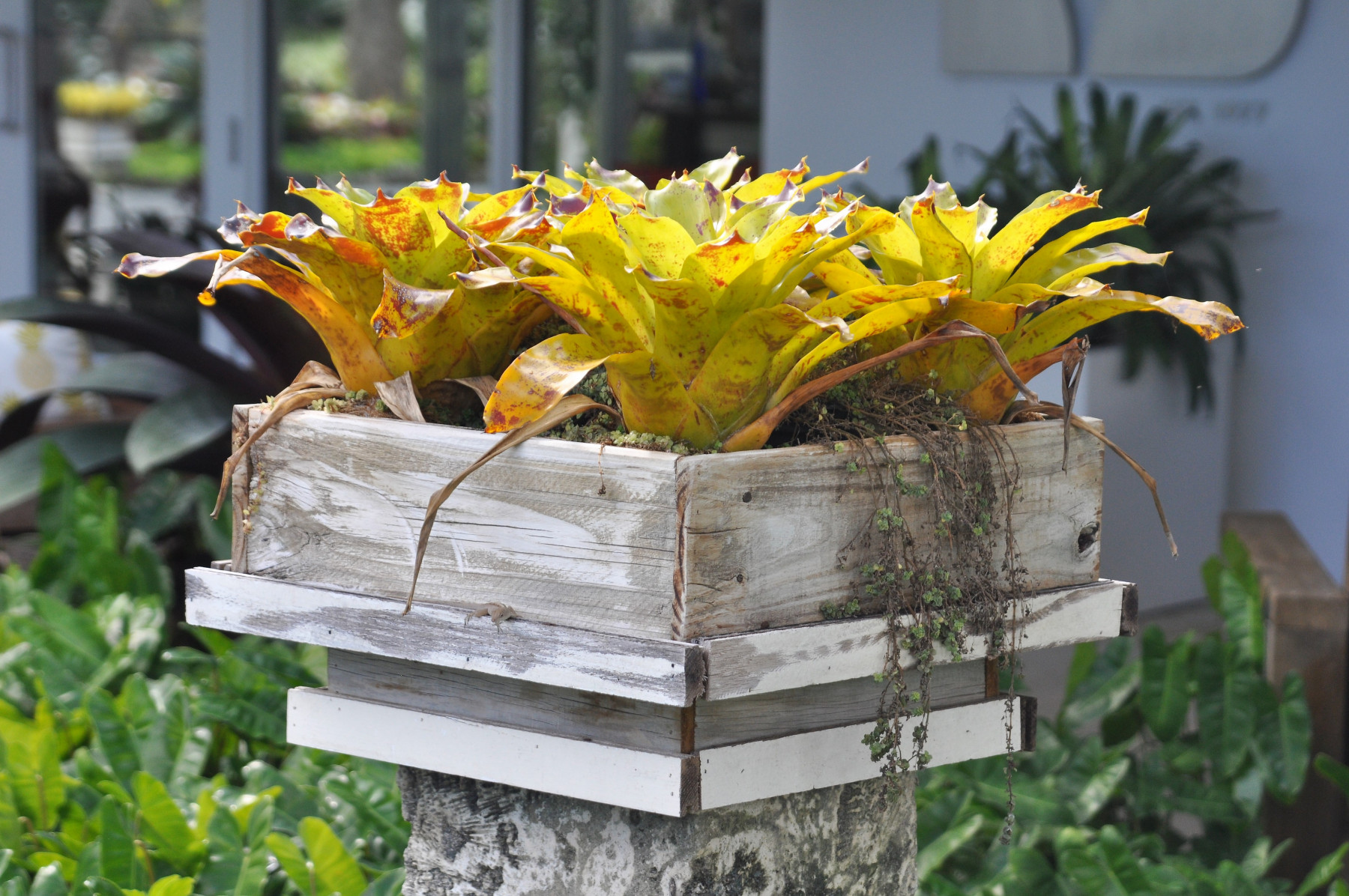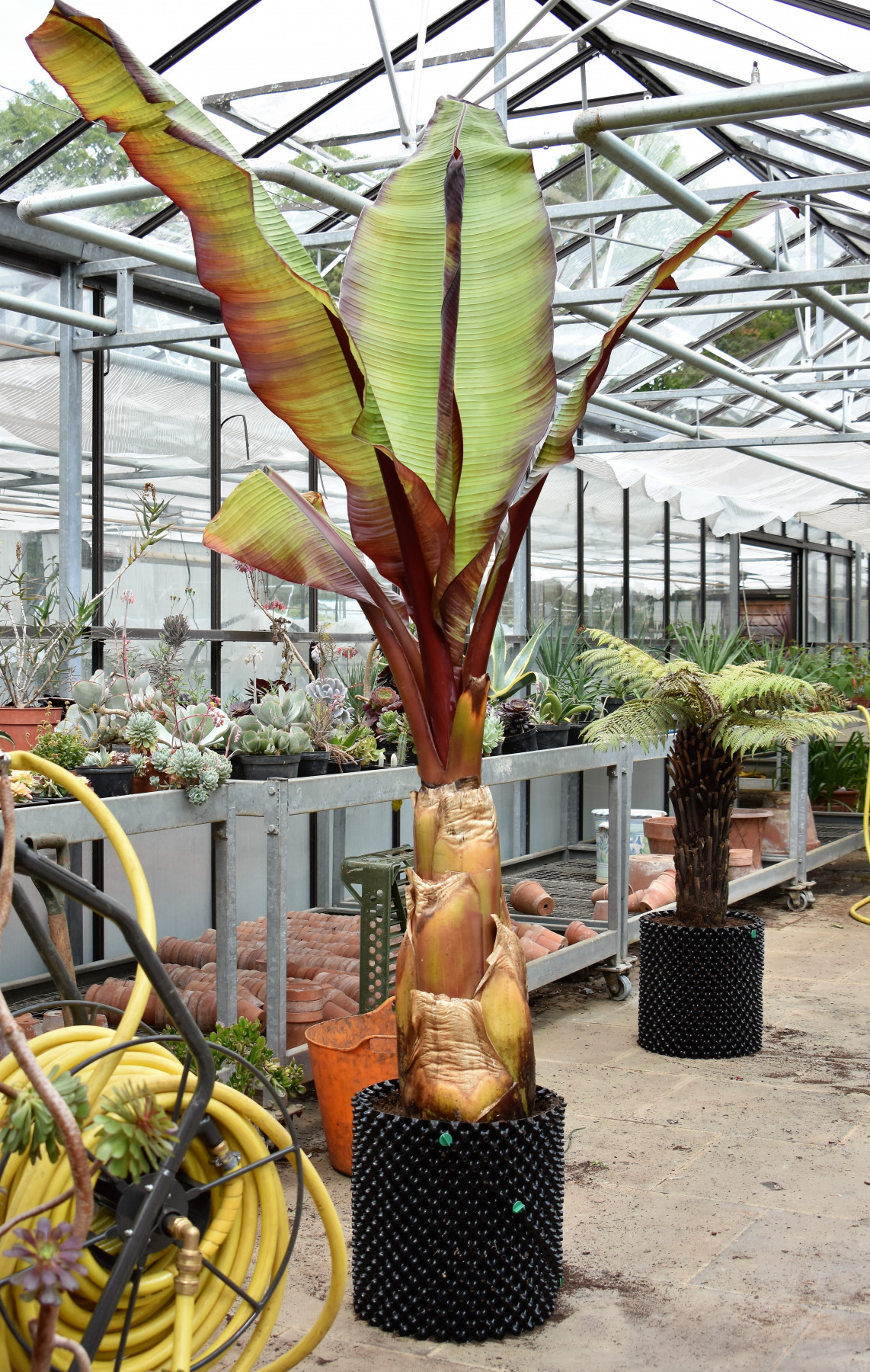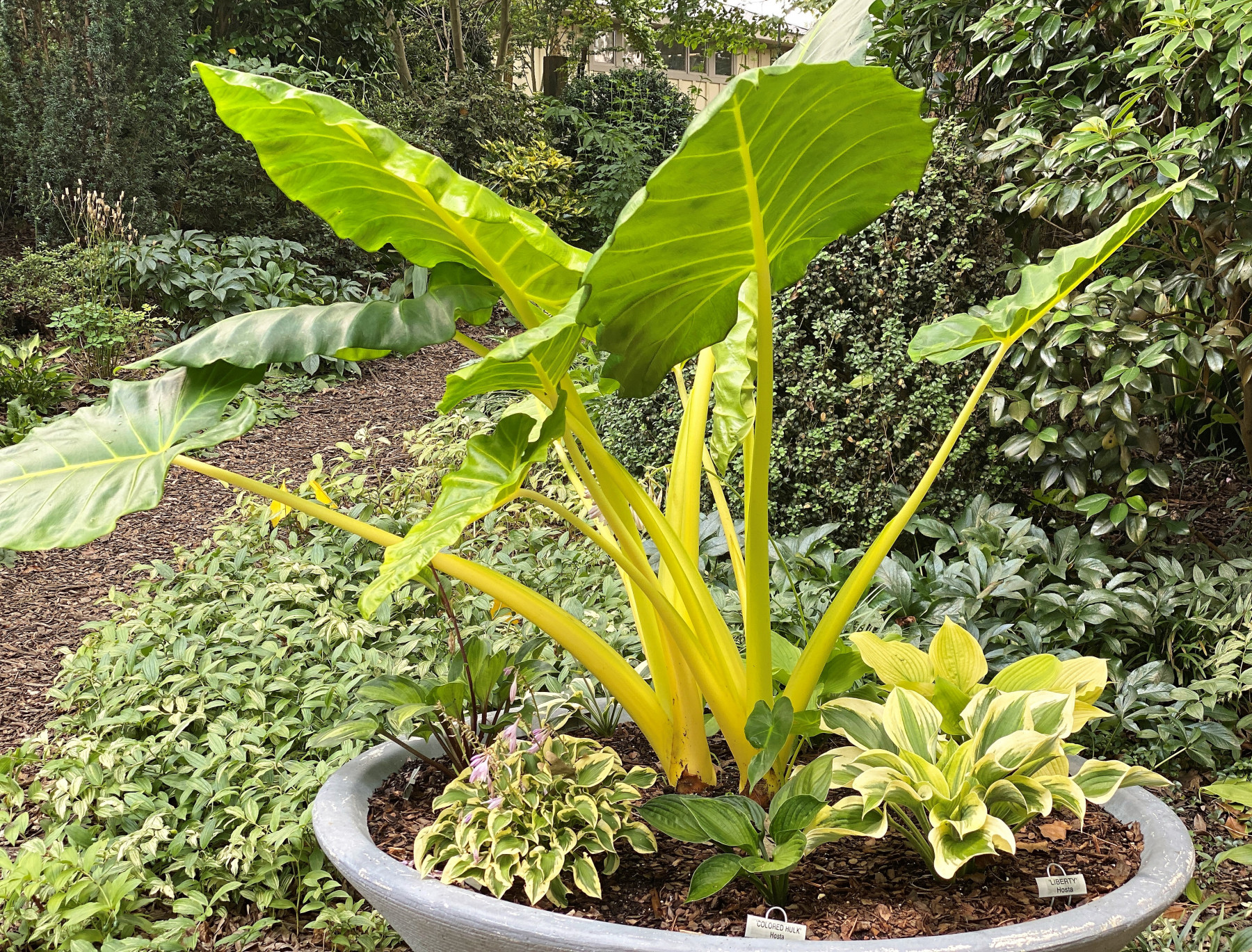
How do you turn a stranger into a friend? You reach out and create a relationship, of course. And if those strangers are tropical plants? Marianne Willburn, author of the book, Tropical Plants and How to Love Them, has light-heartedly and cleverly introduced tropicals by categorizing these plants into five recognizable relationship stages—from summer flings through long-term commitments. And while many of her suggestions don’t require growing under glass, what better place for your new besties than to put them in a greenhouse?
I asked Marianne what makes these plants so irresistible. “For me, it’s about the bold contrast created by tropical and subtropical plants in a predominately temperate garden,” Marianne says. “Setting the elements of color, shape, size, and texture against each other creates pockets of surprise and energy in the garden – particularly when energy levels are flagging in the late summer season.”

Surprise in garden design is important, Marianne tells me. “Used wisely—and strategically—tropicals can create these unusual effects with combinations that thrill both gardeners and non-gardeners alike.”
Given that, why would folks avoid using them? Tropicals are strangers to many gardeners, “They’re not sure how to care for them or what it will take,” Marianne says, “and they wrongly assume they’re all difficult to grow.”
But care doesn’t have to be hard, she says. “If in doubt, increased heat, water, humidity, and food is usually a good place to start.” However, the real secret to a successful relationship—get personal. “Research is the key!” Marianne says. Just like temperate plants, tropicals have a wide variety of needs. Find out what they are.
“It’s important to research the native habitat of the plants you’ve decided to grow, and site them or overwinter them accordingly,” Marianne says. Once you know their habits, you can fulfill their needs. “Many may be subtropical and require a period of dormancy or dry conditions for certain times. Some may never flower or fruit in cool nighttime temps.”

And speaking of temperatures, here are Marianne’s suggestions for which tropicals will flourish overwintering in greenhouses at specific temperatures.
Cool greenhouse: 40 F. (4 C.) – “Keep them on the dry side,” Marianne advises, “but not desiccated. These can hang out in a fully dormant state.”
Canna, Colocasia, and bananas—Musa and Ensete
Warm greenhouse: 55 F. (12 C.) – Up to about 55 degrees, Marianne likes to hold these plants in stasis; they’re not actively growing, but still green. “It’s better for them,” she says. Also keep them on the dry side and well ventilated.
Alocasia, gingers (Hedichium, Alpinia, Zingiber etc.), and most palms
Room temperature 70 F. (21 C.) – “That’s almost active growing conditions,” Marianne notes. So keep plants well-watered, with higher humidity levels. “Bromeliads would love this situation.”
Bromeliads, Clerodendrum, and Medinilla


